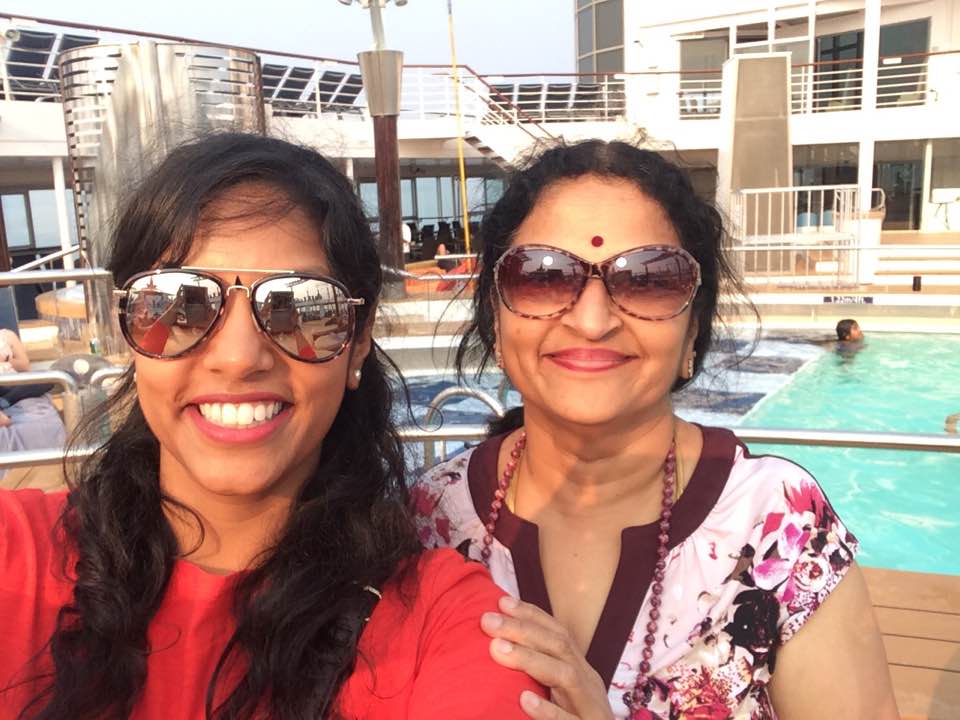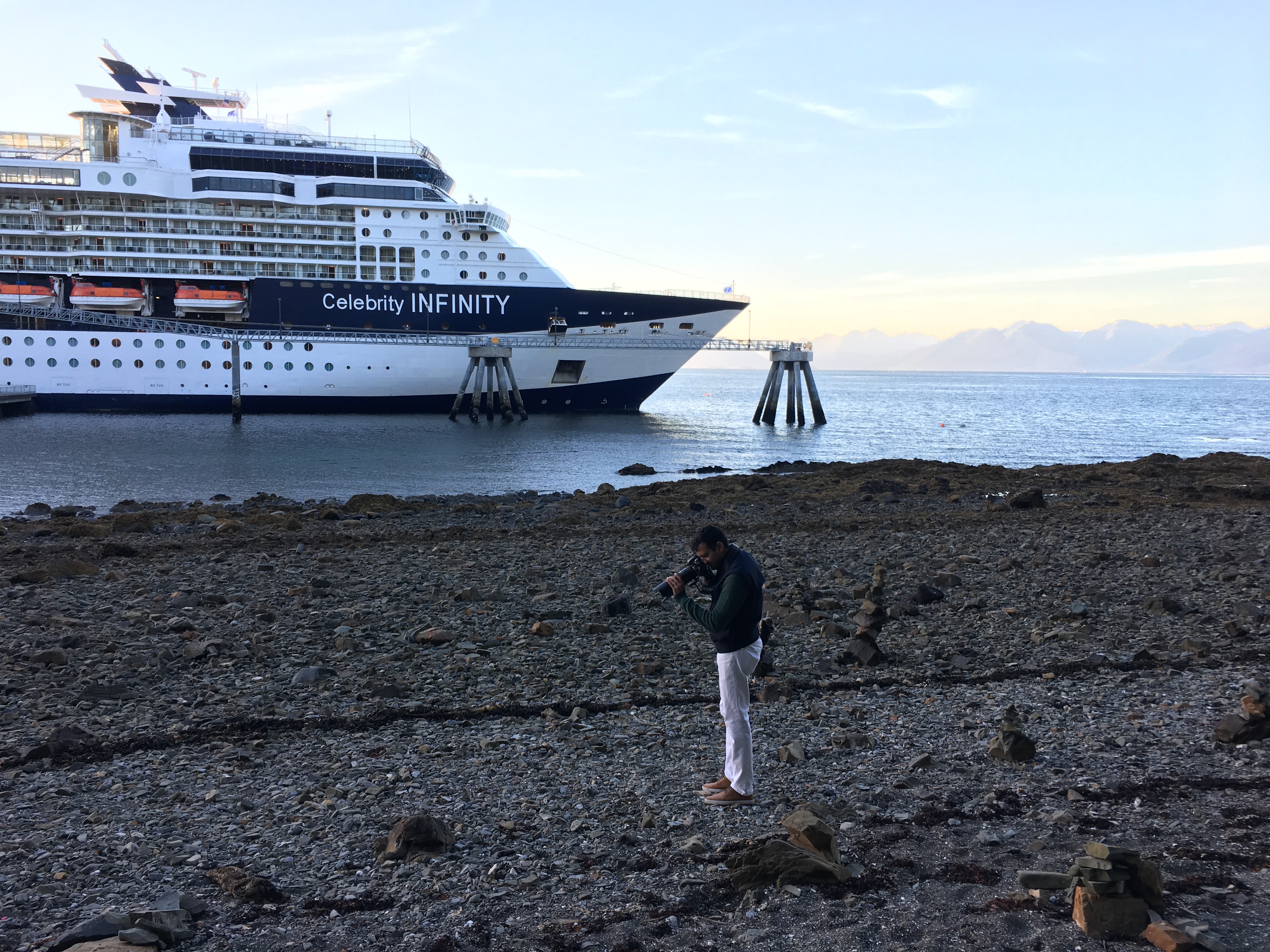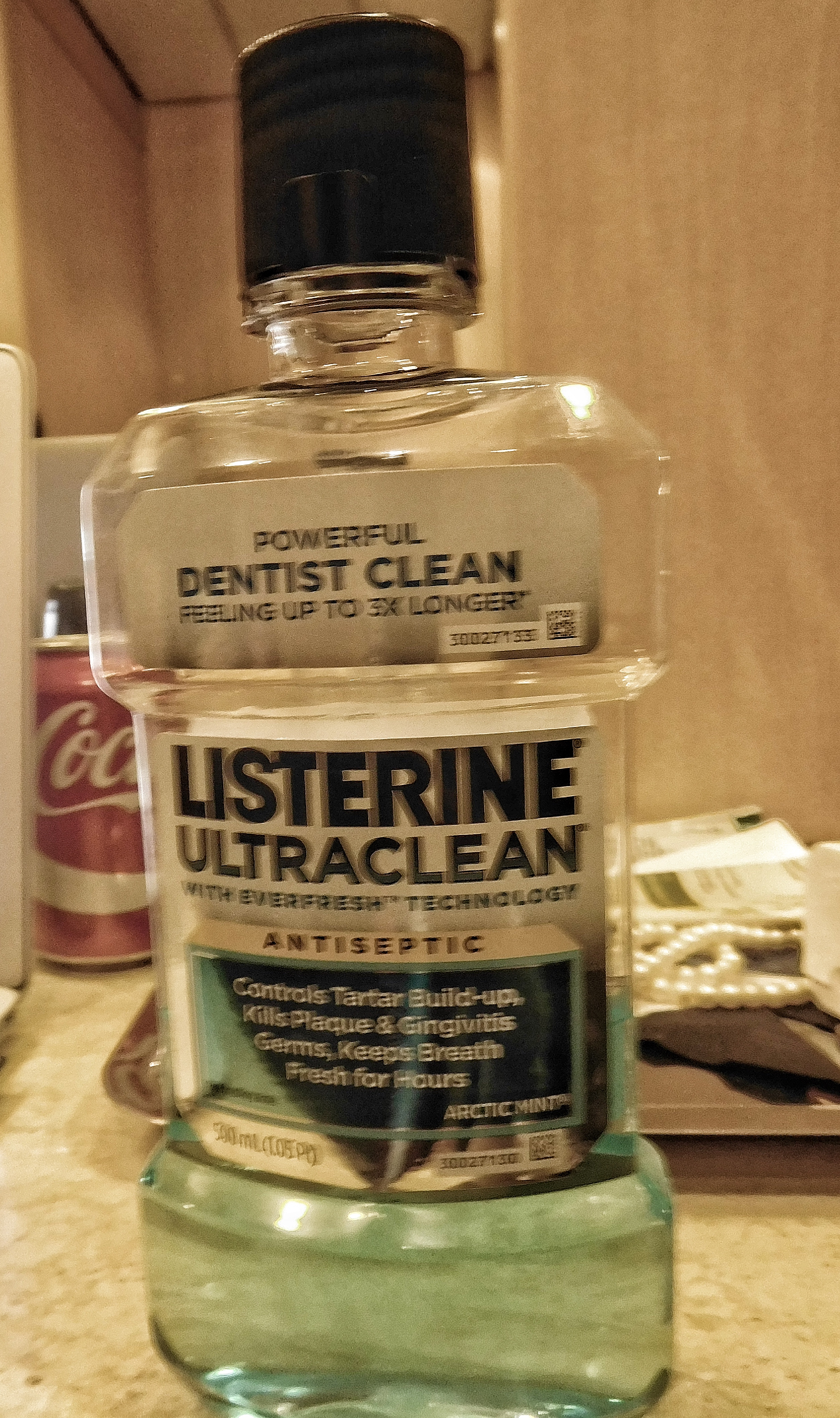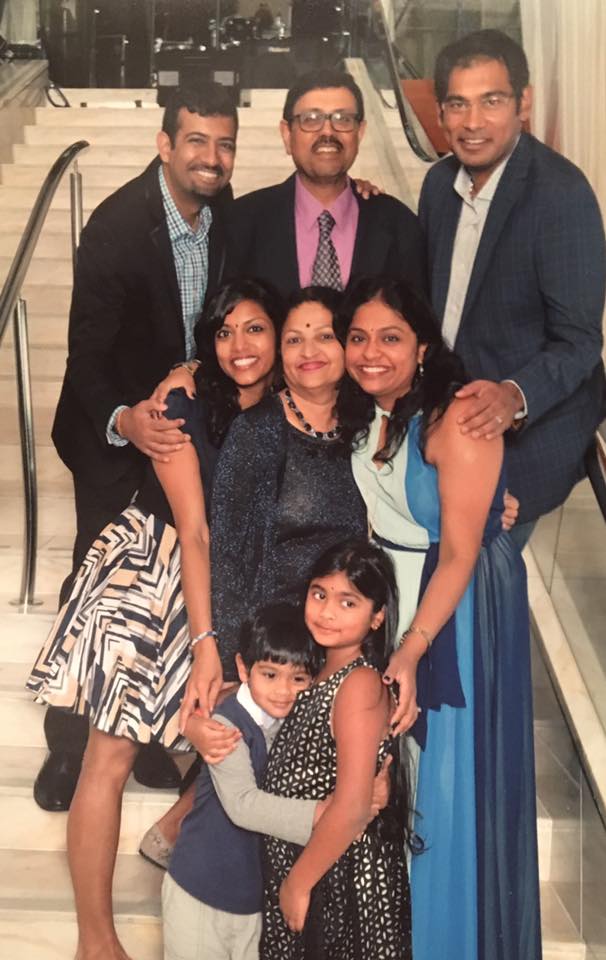I love going on vacations, but I don’t always like planning them. Sure, there’s a thrilling aspect to the excitement that builds in the months and weeks leading up to a getaway, but somewhere in between my indecisiveness and wanting to ensure everyone has a good time, figuring out the logistics isn’t always an easy task, especially if it’s a completely new destination or a different type of trip altogether.
That was the case for the one-week cruise vacation my family planned in August.

Last summer, my mom wanted all of us to take a cruise to Alaska to celebrate her milestone birthday, but none of us had experience planning a cruise vacation before. Luckily for us (and me), my parents managed most of the planning through AAA, because it was our first cruise. Now, after having spent a week on a ship through Alaska’s Inside Passage, I have a better understanding of the logistics and would feel confident planning one in the future. I don’t assume all cruise vacations are created equal, but if you’re planning your first cruise trip soon, here are some essential considerations that will make the planning process easier.

1. Selecting your destination and time frame

Where do you want to go? Sounds like a ridiculously obvious step, right? But I’m calling it out here because where you decide to go will help narrow focus for other parts of planning in most cases. For instance, if I were going to the Bahamas or somewhere in the Caribbean, I would feel fine with a short three- or four-day cruise, versus a cruise in the Mediterranean where I’d want to spend more time at the various cities we would stop. Plus, this destination could also determine which cruise line or itinerary you select, as not all operators have itineraries for all locations, or some operators may be better known for particular routes.
When do you want to go? Certain voyages are not offered during specific times of the year due to weather conditions and other seasonal factors, so if you are constrained to traveling during a certain time of year, that itself my restrict your destination options, or vice-versa (i.e. if you have a destination in mind, you may be limited to certain times of the year).
In our case, we were set on an Alaskan cruise, which meant predominantly summer itineraries.
2. Selecting your specific cruise operator, ship, and itinerary

How much time can you take off and how do you generally like to spend time on vacation?
If you like to lounge and relax, you probably won’t mind a cruise that has longer periods at sea. If you like to be active, you can still choose a longer trip duration, but may want to make sure your cruise will have enough activities to keep you busy.
Certain cruise operators only offer routes to certain areas, and in many cases, they will offer several varying routes in a region. There can be different itineraries for a single locale, too, so choose one based on how many ports you’d like to stop at or how long you’d like to be on the ship.
Cruise lengths can range from three days to several weeks or months (think world cruises). If you choose a longer cruise where you will be onboard more, you’ll want to select a cruise ship that has the activities and amenities to make your stay on the ship more comfortable. Maybe you want a larger room so you won’t feel cramped, or a smaller cruise where you can get to know the other travelers. Yes, cruise ships can be quite big, but trust me, even after a couple days confined to a vessel you’ll feel like you’ve already seen every inch of it, so keep that in mind.

Furthermore, some cruise operators may send certain vessels to certain parts of the globe but not others and each vessel may be equipped with different features. One may have a water slide and arcade, while another may have basketball court and casino. For instance, ships in the Caribbean are much larger than those traveling Alaska’s Inside Passage. Are you looking for a smaller or larger ship? Do you prefer a lively crowd or intimate and cozy atmosphere? With whom will you be traveling?

For instance, some Carnival Cruises tend to attract younger, lively crowds and are priced lower. Meanwhile, Disney cruises attract more families with young children, though in general, I’ve heard only positive reviews from anyone who has gone on a Disney cruise, regardless of their age.
On the Celebrity Cruise we traveled, there seemed to be multi-generational families–parents, grandparents, young adults and children traveling together, or older adult couples. It was generally a mature and sophisticated crowd, which we were fine with, but we didn’t notice many other young couples with whom to mingle.

This was fine for us since we were traveling as a multi-generational family too, but if Jis and I had gone on our own, or in the future when we have kids, we may choose a different brand. But to be fair, it could be that these younger couples were only coming out later in the evening: One night when Jis had stayed up late to try to see if he could catch a glimpse of aurora borealis –rare for an Alaskan Inside Passage cruise at this time of year– he came back to our stateroom and told me he had finally found all the young people: they were dancing at the club and out at the bars. Maybe we had missed the younger crowds because were being lame and ourselves in bed by 10 pm most nights (which I will attribute to jetlag and the time zone differences).
Either way, the group with whom you are traveling may help you decide which type of cruise to pick (think: boozy or bougie?) .
3. Figure out how you’ll get to the port of embarkation
Once you’ve selected your cruise, you’ll still need to figure out how to get to your port of embarkation. You may have to plan additional transport by air, car, or again, even by sea to get to the ship, or, if the port of embarkation is interesting, you may want to consider getting there early or staying a couple days after the cruise disembarks to explore that city as well. Remember that in some cases, the cruise you selected could be one-way, which means you may have to arrange transport to one city by one method and from another city by another (round-trip air ticket won’t work).
In our case, our cruise departed from Vancouver, but we decided to fly into Victoria the day before departure to explore Butchart Gardens. We took the British Columbia Ferry from Victoria to Vancouver the next morning and then took a taxi from the ferry terminal to the cruise terminal.

While I’m glad I was able to see the beautiful gardens in Victoria, in retrospect, I would have preferred to fly directly into Vancouver so that my family and I could have gone to the port of Vancouver boarding area sooner. One of the biggest lessons learned from this trip is that boarding a cruise a lengthy process. We showed up 3-4 hours before the cruise was to depart, and still the lines were long. We reached the Port of Vancouver at around 11 a.m. but only made it on to the ship close to 3.

4. Select your excursions & add-ons
Once you’ve got the major logistics set, you can start to think about the shorter land excursions you want to take at the ports of call where your cruise will be stopping.
Some people choose to not book these because they prefer to explore on their own, and that’s fine. However, I’d still encourage you to take a look at the list early on in case you find something of interest, because once you board the cruise some of the popular excursion may already be filled up. (Basically, you can still book excursions on board, based on availability). When you’ve booked your cruise, the cruise operator should typically give you a list of recommended excursions that are partnered with the cruise. There is no obligation to choose from their list, but if you do select from it, you’re offered more security in terms of not being left behind at a port of call! (I don’t know how often people actually get left behind, but if you’re working against short time windows on land, it may be best to pick tours partnered with the cruise itself).

If you book a tour not partnered with the cruise, there’s no guarantee the cruise will wait for you if you’re delayed from your excursions. That said, in these ports, the tour operators are very familiar with operations and will stick to schedules to keep you on track for the most part.
Add-ons: In terms of adding on wifi, beverage or additional packages, we didn’t do any of it, but those options are available. We were fine disconnecting from mobile devices for a week, so connectivity was unnecessary.
For alcohol, most cruises will allow you to bring up to one bottle of wine or champagne

on board per guest, and in our case, that was enough, so we hardly spent extra on libations during the week. It didn’t make sense for us to add on alcohol packages. (Ok, and maybe we snuck in some something a little stronger in an emptied out Listerine bottle, but I won’t officially recommend anyone else do this because our cocktails tasted like spearmint).
Note that even for beverages such as soda or premium coffee drinks such as lattes, you can only get them from a package or purchasing them separately at a one-off basis. They are not included. Therefore, think about how much you actually consume these and whether it would make more sense to purchase a package for cost efficiency instead.
5. Pack
Your destination’s climate and culture will obviously determine what you pack, but I would say, it’s always smart to pack in layers regardless. (and also, see alcohol above 🙂
Formal wear: On some cruises, there are a couple formal evenings or spaces where dressier attire is expected. For a one-week cruise like ours, that might be two formal nights, but the rules around “formal” are still pretty relaxed so just check your particular cruise’s website and other blogs/forums to see what is appropriate. On the formal nights, you have the opportunity to take a professional group photo with your friends and family (below is not the professional snap, but an example of what’s allowed: blazers, ties, dresses, and blouses and cardigans work fine).

Fitness gear: I highly encourage packing active wear and bathing suit as well so you can use time on board to use the gym and other fitness facilities. This is helpful since you’ll be spending so much time eating on a cruise, and you may want some counter you calorie intake with some exercise to avoid the dreaded weight gain inevitable on a cruise vacation.
Gratuity: Gratuity for each day of your cruise is added on to your bill afterwards (that is, not included when you pay for your ticket up front, but included in the final cruise charges when you leave). That typically costs about $10-$12 per person per day. Our understanding was that this per-day charge covered service charges for meals. However, housekeeping staff come into your staterooms and attend on you regularly (daily) during the cruise, so you’ll want to keep cash on hand to tip them at the end, too. Our room attendant, Alpredo, was a smiling, sincere and steadfast steward, and we were happy with his service through the week. Therefore, keeping in mind the general rule of $2-3 per person per day for a hotel stay, we gave him a round $50 at the end of the trip, and this seemed on par with Cruise Critic suggestions as well.
6. Coordinate activities on board
Planning and coordination doesn’t stop when you board the cruise.
On board the ship, there should be a daily activity guide that tells you the free, paid, and VIP activities for that day. A cruise director also announces some of the more popular events to rally the crowds. Aboard the Celebrity Infinity, we also received information in a daily newsletter that was delivered under our door each morning, and also through the cruise’s information channel on TV. Every morning, I’d go through the newsletter and circle the activities that were of interest to me so I could plan accordingly, and then we’d discuss with the rest of the group so we could figure out the activities we wanted to do together. Since regular cell phones don’t work at sea, calling friends and family to coordinate plans isn’t an option. Instead, you have to go old school and actually set meeting times with everyone if you plan to do things together.
There were two days in particular where I spent roughly 40 minutes each time trying to locate a family member on board. Ironically, even in a confined space such as a ship, it’s possible to lose track of people if you’re all walking around below deck, above deck and in loops along the corridors missing each other each time. Leave notes, set meeting times, and plan ahead.
7. Limiting Factors
The above is the sequence that I would go through to keep the planning methodical and efficient, but I could see where someone who is drawn to a particular cruise operator may start with that as the determining factor first, or someone who is limited with a certain number of vacation days or budget may start by looking at shorter itineraries and use price as a determining factor. Ultimately, you want to start with your most limiting factor. For a family with kids, a kid-friendly cruise brand such as Disney maybe the constraint, so that would be the starting point. Meanwhile, a retiree with many available days for a getaway could look for longer cruise voyages. For the college student looking to plan an affordable group trip with friends, an all-inclusive bundle deal may be the way to go.
Figure out what your constraints are and start with that first. Once you’ve met those constraints, working out the remaining vacation details will be smooth sailing from there.
Related Posts:
6 Comments
Comments are closed.











[…] 7 Essential Steps for Planning a Cruise Vacation […]
[…] 7 Essential Steps for Planning a Cruise Vacation […]
[…] 7 Essential Steps for Planning a Cruise Vacation […]
[…] 7 Essential Steps for Planning a Cruise Vacation […]
Looks like fun
[…] 7 Essential Steps for Planning a Cruise Vacation […]